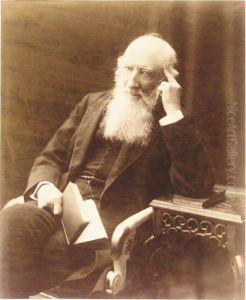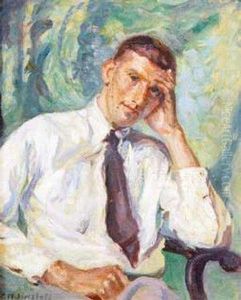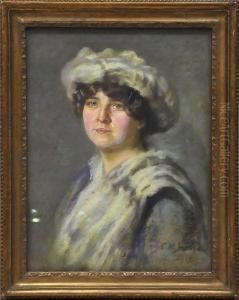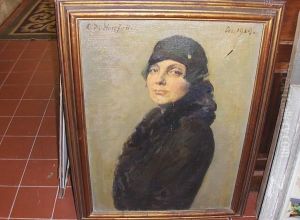Charles Mendelssohn Horsfall Paintings
Charles Mendelssohn Horsfall, born in 1863, was a British artist whose life and work spanned the late Victorian era into the early 20th century. Despite not being as widely recognized as some of his contemporaries, Horsfall contributed significantly to the art scene of his time, particularly within the realm of landscape and portrait painting. His works are characterized by their delicate attention to detail, a testament to the training and skill he developed over his career.
Horsfall's artistic journey was influenced by the broader movements of his time, including Impressionism and the Arts and Crafts Movement, although he maintained a distinctive style that was uniquely his own. His landscapes often depicted the British countryside, capturing the changing seasons and the play of light with a sensitivity that resonated with viewers. Meanwhile, his portraits were celebrated for their depth of character and realism, offering insights into the personality of his subjects that went beyond mere physical likeness.
Throughout his career, Charles Mendelssohn Horsfall exhibited his work at various prestigious venues, including the Royal Academy of Arts. However, his commitment to his craft went beyond producing art for exhibition. He was also involved in the educational aspect of the arts, advocating for greater public access to art education and supporting the development of emerging artists. This aspect of his work highlights the broader cultural contributions he made, emphasizing not only the creation of art but also the cultivation of appreciation for it among the general public.
By the time of his death in 1947, Horsfall had left behind a legacy that, while perhaps not as celebrated as that of some of his peers, was nonetheless significant. His dedication to his art, his skill in capturing the beauty of the natural world and the essence of human character, and his efforts to promote art education all contributed to the rich tapestry of early 20th-century British art. Today, his works can be found in several collections and galleries, serving as a reminder of his talent and his contribution to the cultural heritage of Britain.



